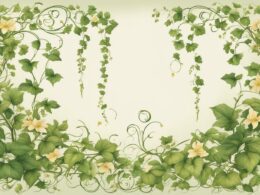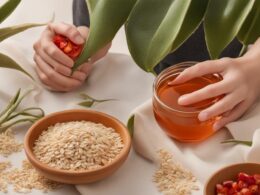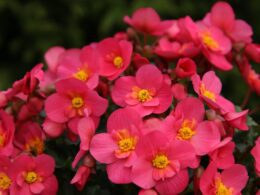Are you looking to start a flower bed but not sure which soil to use? Topsoil and compost are both popular options, but which one is better for your needs? Understanding the differences between the two and considering your specific circumstances can help you make an informed decision that will promote healthy plant growth and minimize the risk of problems.
Topsoil is the uppermost layer of soil, typically the first six to ten inches, and is composed of various minerals, organic matter, and microorganisms.
Compost, on the other hand, is a mixture of decomposed organic matter, such as leaves, grass clippings, and food scraps.
While both topsoil and compost can provide nutrients and promote drainage, they have different characteristics that may make one more suitable for your flower bed than the other.
Read on to learn more about the differences between topsoil and compost and how to choose the best option for your needs.
Understanding the Differences Between Topsoil and Compost
You’re probably wondering which type of earthy material will give your garden the nourishment it deserves. Let’s explore the distinctions between these organic substances.
Topsoil is the uppermost layer of soil, consisting of a mix of organic matter, minerals, and microorganisms. It’s often sold in bags or by the cubic yard and comes in different types, such as sandy, loamy, or clayey, depending on the region where it’s sourced.
Compost, on the other hand, is a mixture of decomposed organic matter, such as leaves, grass clippings, and food scraps. It’s made by piling up these materials and letting them break down over time, aided by bacteria and fungi. The resulting product is a dark, crumbly substance that’s rich in nutrients, such as nitrogen, phosphorus, and potassium.
There are many benefits of composting, including reducing waste, improving soil structure, and promoting healthy plant growth. So, which one should you use for your flower beds? The answer depends on your specific needs and preferences.
Topsoil can provide a solid foundation for your plants, especially if you’re starting a new garden bed or need to level out uneven terrain. However, it may lack the organic matter and nutrients that compost can offer. Compost can enrich the soil and help retain moisture, which is crucial for flower beds. You can mix it with topsoil or use it as a top dressing, depending on the type of plants you’re growing.
Ultimately, a combination of the two can provide the best of both worlds for your garden.
Considerations for Choosing Topsoil
When selecting the ideal growing medium for your flower beds, there are a few things to consider. One of the most important factors is soil quality. Topsoil is often preferred for its nutrient-rich composition and natural fertility. It contains a mixture of organic and inorganic materials that are essential for plant growth and development.
Another consideration is drainage capacity. Topsoil typically has a higher capacity for drainage than compost, which is more water-retentive. This can be beneficial in preventing waterlogged soil and root rot. However, it’s important to note that drainage capacity can vary depending on the specific type of topsoil, so it’s important to choose a quality product that is appropriate for your specific needs.
Overall, when choosing between topsoil and compost for your flower beds, it’s important to prioritize soil quality and drainage capacity. Topsoil is typically the preferred option for its nutrient content and drainage capabilities, but it’s important to choose a high-quality product that is appropriate for your specific needs.
With the right growing medium, you can create a healthy and vibrant garden that will thrive for years to come.
Considerations for Choosing Compost
If you want to ensure that your plants have access to the nutrients they need to thrive, it’s important to consider the quality of the organic matter you choose to add to your soil. Compost is a popular choice among gardeners, as it is made from organic matter that has decomposed over time.
When selecting compost for your flower beds, it’s important to consider the source of the organic matter used to create the compost. Organic matter selection is key when choosing compost for your flower beds. Look for compost that has been made from a variety of organic materials, such as grass clippings, leaves, and food scraps. These materials will break down over time and provide your plants with a variety of nutrients.
It’s also important to choose compost that has been properly aged, as fresh compost can actually harm your plants. Nutrient content analysis is another important consideration when choosing compost. You can have your compost tested to determine the nutrient content, or you can look for compost that has been certified by an organization such as the United States Composting Council. This will ensure that the compost has been made using best practices and will provide your plants with the nutrients they need to thrive.
By selecting high-quality compost for your flower beds, you can ensure that your plants will receive the nutrients they need to grow strong and healthy. Take the time to consider the organic matter selection and nutrient content analysis of your compost, and you’ll be rewarded with a beautiful, thriving garden.
Using Topsoil and Compost Together
To really enhance the health and growth of your plants, combining the nutrients from both organic matter and decomposed materials is a great idea. The mixing of topsoil and compost can create a nutrient-rich environment for your flower beds.
This mixing method allows for the benefits of both topsoil and compost to be utilized in the growth process. Topsoil provides the necessary minerals and organic matter that support plant growth. On the other hand, compost provides the decomposed organic matter that supplies nutrients and beneficial bacteria to the soil.
By mixing these two materials together, you can create a balanced environment for your plants to thrive. The nutrient benefits of combining topsoil and compost are numerous. The addition of compost to topsoil can improve soil structure, water retention, and aeration. It also increases the soil’s ability to hold onto nutrients, making them more available to the plants.
So, don’t hesitate to mix topsoil and compost together for your flower beds. Your plants will thank you for it!
Conclusion: Choosing the Best Option for Your Flower Beds
You want your garden to thrive and choosing the right option can make all the difference in the world. When it comes to flower beds, both topsoil and compost can be beneficial, but which one is the best option for you? It ultimately depends on your specific needs and preferences.
If you’re looking for a quick fix, topsoil may be the way to go. It’s great for filling in low spots and improving drainage. However, keep in mind that topsoil alone doesn’t provide the necessary nutrients for plants to thrive. That’s where compost comes in. Compost is rich in organic matter and can improve soil structure, water retention, and nutrient availability.
When deciding between topsoil and compost, it’s important to consider the long-term benefits. While topsoil may provide immediate improvements, adding compost to your flower beds can have lasting effects. Plus, incorporating mulching benefits can help retain moisture and prevent weeds from growing.
Before making a decision, consider having your soil tested to determine its nutrient levels and pH balance. This will help you determine which option will benefit your flower beds the most.
Frequently Asked Questions
What is the difference between topsoil and potting soil?
When it comes to gardening, choosing the right soil is key.
Garden soil, also known as topsoil, is a natural soil that is rich in nutrients and organic matter. It is great for outdoor flower beds and vegetable gardens because it is already rich in nutrients and organic matter.
On the other hand, potting soil is a mixture of peat moss, perlite, and other soil amendments that are designed to provide good drainage and aeration for container plants. It is best for containers because it is lighter and provides better drainage.
While both types of soil are suitable for growing plants, they have different advantages.
It is important to choose the right soil for your specific gardening needs to ensure healthy and thriving plants.
Can I use compost as a substitute for fertilizer?
Composting is a great way to create nutrient-rich soil for your plants and flowers. It’s also an excellent method for reducing food waste and supporting sustainable gardening practices.
Compost can serve as a substitute for fertilizer since it provides essential nutrients to your plants in a natural way. By using compost in your flower beds, you can promote healthy growth and vibrant blooms.
So, if you want to make the most of your gardening efforts while also being kind to the environment, give composting a try for sustainable gardening.
How do I know if my flower bed needs topsoil or compost?
To ensure that your flower bed thrives, it’s important to pay attention to signs of nutrient deficiency. If your plants are stunted, yellowing, or not blooming, it may be time to amend your soil with organic matter.
This is where compost comes in. Adding compost to your flower bed provides numerous benefits, such as increasing soil fertility, improving drainage, and enhancing soil structure. Organic matter also helps retain moisture, which is especially important during dry spells.
By amending your soil with compost, you’re not only improving the health of your flower bed, but also the overall health of your garden. So, keep an eye out for signs of nutrient deficiency and consider using compost to give your plants the boost they need.
Is it necessary to mix topsoil and compost together before adding them to the flower bed?
To get the most out of your flower bed, it’s important to know how to mix topsoil and compost properly. Mixing techniques can vary, but the most effective method is to layer them together in the bed.
This allows for equal distribution of nutrients and organic matter throughout the soil. The benefits of using both topsoil and compost are numerous. Topsoil provides a strong base for plants to grow in, while compost adds nutrients and improves soil structure.
By mixing the two together, you’ll have a rich, fertile soil that will help your flowers thrive. So, while it may not be necessary to mix topsoil and compost together, it’s highly recommended for optimal results.
Can I use homemade compost in my flower bed?
Using homemade compost in your flower bed can be a great way to improve soil health and provide essential nutrients for your plants. The benefits of composting are numerous, including reducing waste, saving money, and promoting healthy growth.
However, there are common mistakes people make when creating their own compost, such as not properly balancing carbon and nitrogen, adding too much moisture, or not turning the pile frequently enough. To ensure the best results with your homemade compost, make sure to follow these guidelines and monitor the quality of your soil regularly.
By doing so, you can create a thriving flower bed that will be the envy of your neighborhood.
Conclusion
So, which is better for your flower beds: topsoil or compost? Well, it really depends on your specific needs and goals.
Both topsoil and compost can bring different benefits to your garden, and choosing the right one will depend on the type of plants you’re growing, the condition of your soil, and your overall gardening goals.
If you’re looking to improve the overall quality of your soil, compost may be the better choice. It can help to add nutrients to the soil, improve drainage, and encourage healthy growth in your plants.
On the other hand, if you need to add more volume to your soil or fill in low spots, topsoil may be the better option.
Ultimately, the best choice will depend on your unique situation and needs. Don’t be afraid to experiment with different options until you find the perfect fit for your garden.








